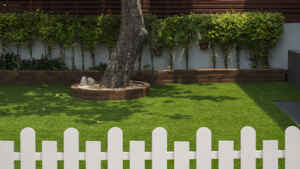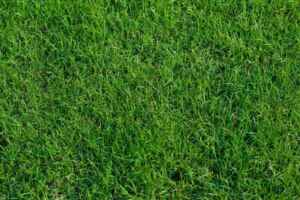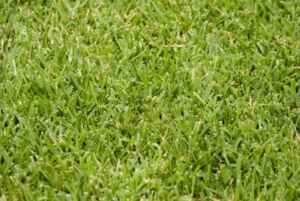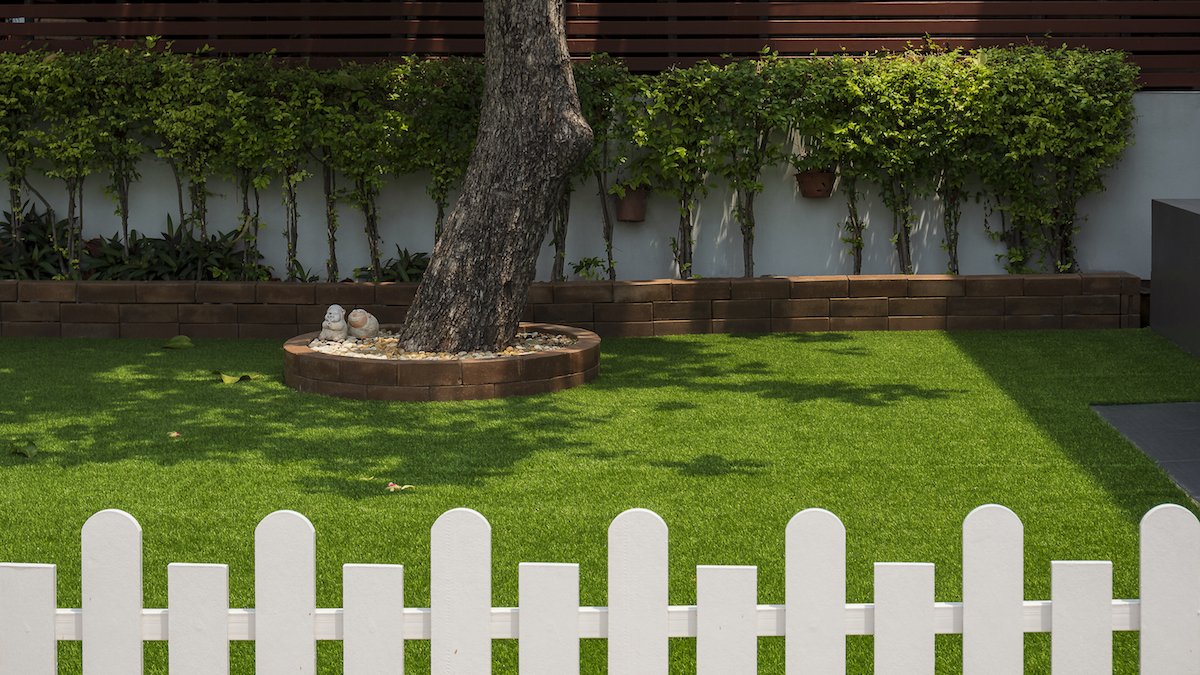The Best Types of Grass for Shady Areas
If you have a shady area in your yard, it can be tough to find the right grass to fit the bill. Creating a beautiful lawn and garden is all about choosing the right plants for the right location. There are several factors you need to take into account when designing your yard and before choosing grass to plant. Grass grows best in areas where there is plenty of sunlight. However, grass can also grow in shady areas. So what is the best grass for shady areas?
The type of grass that grows best in a shady area depends on the amount of shade and the climate. A grass that grows well in shady areas in one climate may not do well in another climate. However, some types of grass that are known to do well in shady areas include:
- Fescue
- Bermuda
- Zoysia
- St. Augustine
- Kentucky Bluegrass
It is also important to choose grass that is appropriate for the amount of shade in the area. Grass that grows best in full sun may not be able to survive in an area that only has partial sun. Before planting any grass, it also might be a good idea to talk to a local landscaper or gardening expert. They will be able to give you specific advice on what type of grass will grow best in your area. In general, grasses that grow in shady areas need to be able to tolerate low light levels. They also need to be able to handle strong winds and heavy rains. Now, let’s examine each of these types of grass in greater detail.

Fescue
Fescue is a versatile grass that can tolerate a wide range of growing conditions, making it a good choice for both sunny and shady areas. In shady areas, fescue will often stay green longer than other grasses because it doesn’t rely on sunlight for photosynthesis. Instead, fescue produces food through a process called chemosynthesis, which uses chemical reactions to convert soil nutrients into energy. This means that fescue can still thrive even in low-light conditions.
Additionally, fescue is relatively drought-tolerant and resistant to disease, making it a low-maintenance option for shady areas. With its ability to adapt to different growing conditions, fescue is an ideal choice for homeowners who want versatile grass that can be used in multiple areas of their yard. While fescue is a relatively low-maintenance grass there are a few things that you can do to ensure a good-looking grassy area.
Tips for Caring for Bermuda Grass in a Shady Area:
1. Water deeply and thoroughly, but don’t over-water.
Fescue grass can be susceptible to root rot, so it’s important not to make the soil too wet.
2. Cut fescue grass high.
This will help the Grass blades grow longer and stronger, which will help the fescue better compete with weeds. Cutting it too short can damage the grass and make it susceptible to disease.
3. Use a fertilizer designed for fescue grass.
Fertilizing fescue helps promote strong growth and deep roots, which is essential for preventing soil erosion.
4. Keep an eye out for pests and diseases.
Fungal diseases can be especially problematic for fescue grass growing in shady areas. Regularly inspect your fescue grass for signs of pests or disease and treat it accordingly.
Bermuda
Bermuda is another grass that is good for shady areas because it is relatively shade tolerant. It is a warm-season turfgrass that is widely used in lawns, golf courses, and sports fields. It is known for its thick, dense growth and its ability to tolerate heat and drought. Bermuda grass can prosper in partial sun to full sun. It also has a high wear tolerance, meaning it can withstand high foot traffic. Bermuda grass is also salt tolerant, heat tolerant, and drought tolerant.
It is also a good choice for shady areas because similar to fescue it is a low-maintenance grass that requires little fertilizer and irrigation once established. However, Bermuda grass grows quickly and thick, crowding out weed growth and like fescue, it is also resistant to most common diseases and pests. Bermuda grass does best in well-drained soils with a pH of 6.0 to 7.0. Unlike fescue, Bermuda grass spreads by rhizomes and stolons, so it is important to contain Bermuda grass if you do not want it to invade other areas of your lawn or garden. This means that it can be invasive, so make sure you understand the risks before planting Bermuda grass in your landscape.
Although Bermuda grass can do well in a shaded area it does take some maintenance to keep it up. If you have Bermuda grass in a shady area of your yard, there are some care tips you can follow to help it stay healthy.
Tips for Caring for Bermuda Grass in a Shady Area:
- Mow the grass higher than you would in a sunny area. This will help the grass blades to grow longer and shade the soil surface, preventing weed seeds from germinating.
- Apply a slow-release fertilizer in early spring to help the grass get off to a strong start.
- Water deeply and regularly during periods of extended drought.

Zoysia
The next popular grass that is known for being able to thrive in shady areas is Zoysia. This is because zoysia grass has a dense growth habit, which allows it to block out the sun and prevent other plants from taking root. In addition, zoysia grass is also very tolerant of drought and heat, making it a good choice for areas that receive little sunlight. As a result, zoysia is an ideal choice for shady areas such as beneath trees or along fences. This grass has a deep root system that allows it to better access water and nutrients in shaded areas. In addition, the blades of zoysia grass are thicker and create a dense network that helps to deflect sunlight. This feature helps prevent weed growth in these areas. However, zoysia grass can be difficult to care for, and it requires regular maintenance in order to stay healthy.
Here are some tips for caring for zoysia grass in a shady area:
- Mow regularly, at least once a week.
- The blade height should be kept at 3-4 inches
- Fertilize twice a year, every spring and fall
- Water deeply and infrequently, to prevent root rot.
- Overseed every few years to maintain a healthy stand of grass
St. Augustine
St. Augustine grass is a type of turfgrass that is commonly used in lawns and gardens. It is a warm-season grass that is native to the Mediterranean region. St. Augustine grass is known for its ability to thrive in shady areas, making it a popular choice for gardeners who have shady lawns. The grass has thick, coarse blades and a deep root system that helps it to resist drought and heat. It is also relatively resistant to pests and diseases but not as much as fescue and Bermuda. For these reasons, st. Augustine is an ideal choice of grass for gardeners who live in hot, humid climates and have shady lawns. St. Augustine is a popular choice for grass in shady areas for a number of reasons.
First, it is relatively tolerant of low light levels, so it can still thrive even when other plants struggle. Second, it has a deep root system that helps to anchor the soil in place, making it less likely to be eroded by wind or water. Finally, St. Augustine grass is known for its thick, lush growth, which helps to create a carpet-like effect that can help to prevent weeds from taking over.
Because st. augustine grass is a type of turfgrass that is common in warm, humid climates like the southern United States and is known for its thick, green blades, there are a few things you can do to care for it and keep it healthy.
Tips for Caring for St. Augustine Grass in a Shady Area:
1. The blade height should be mowed no lower than 3 inches.
This will help the grass to better withstand heavy foot traffic and shading from trees.
2. Water your st. augustine grass regularly and deeply.
Shady areas tend to be cooler and damp, which can lead to fungal diseases. By watering deeply and regularly, you can help to prevent these diseases from taking hold.
3. Fertilize your St. Augustine grass regularly with a fertilizer formulated for shady areas.
This will help the grass to grow thick and green, despite the lack of sunlight.

Kentucky Bluegrass
Kentucky bluegrass is another great option for your shady area. This grass is known for being able to tolerate lower light levels than other types of grass, making it ideal for shady areas. Kentucky bluegrass also has a deep root system, which helps it to stay hydrated even during periods of drought. In addition, Kentucky bluegrass is known for being resistant to disease and pests, meaning that it will require less maintenance than other types of grass. This grass is also a popular choice because of its beautiful color along with its ability to thrive in multiple conditions. However, this grass does require more care than some other types of grass, particularly if it is growing in a shady area.
Tips for Caring for Kentucky Bluegrass in a Shady Area:
1. Make sure the grass is getting enough sunlight.
While Kentucky bluegrass can tolerate some shade, it still needs at least four hours of direct sunlight per day to stay healthy. If your lawn is mostly shaded, consider trimming trees or shrubs to allow more light to reach the grass.
2. Apply fertilizer regularly.
Kentucky bluegrass benefits from regular fertilization, especially if it is growing in a shady area. Talk to your local nursery or gardening center about the best type of fertilizer for Kentucky bluegrass.
3. Choose the right mowing height.
When mowing Kentucky bluegrass, be sure to set the blade at a higher setting. This will prevent the grass from being stunted by low light levels and will also help it to resist disease.
Related Questions
What is the Difference Between Full Sun and Shady Grass?
There are two types of grass, full sun and shady. Full-sun grasses need at least six hours of direct sunlight per day in order to thrive, while shady grasses can tolerate as little as three hours of sunlight. As a result, full-sun grasses are not well suited to growing in shaded areas. If they don’t receive enough sunlight, they will quickly begin to turn yellow and die off. In contrast, shady grasses are much more tolerant of low-light conditions. However, they still need some light in order to prosper. If they are completely deprived of sunlight, they will eventually turn brown and die. Therefore, it is important to choose the right type of grass for your lawn based on the amount of sunlight it receives.
What Grasses are Full Sun?
Centipedegrass is a slow-growing full-sun grass that is often used in commercial landscaping. It is very low maintenance and is resistant to disease and pests. Bahiagrass is a turf grass with an ornamental look that has a finer texture and can create a beautiful, carpet-like appearance in your yard. Whatever full-sun grass you choose, be sure to provide it with adequate water and fertilizer to keep it looking its best.

